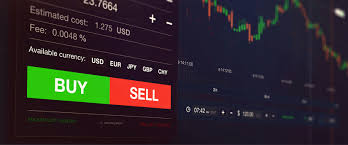
Understanding Forex Trading: A Comprehensive Guide
Forex trading, or foreign exchange trading, is the process of buying and selling currencies in the foreign exchange market. It’s the largest financial market in the world, with a daily trading volume exceeding $6 trillion. Forex trading is not just limited to banks and financial institutions; it’s accessible to individual traders as well. In this article, we will delve into what forex trading is, its significance, how it works, and the strategies employed by traders to succeed. For those interested in exploring this field further, check out what is forex trading https://acev.io/.
What is Forex Trading?
Forex trading is the act of exchanging one currency for another at an agreed price. Currencies are traded in pairs, such as EUR/USD or USD/JPY, which indicate how much of the second currency is needed to purchase one unit of the first currency. For example, if the EUR/USD pair is trading at 1.20, it means that 1 Euro is equivalent to 1.20 US Dollars.
The Importance of Forex Trading
The forex market is essential for many reasons:
- Global Trade: It facilitates international trade and investment by allowing businesses to convert one currency into another.
- Liquidity: The forex market is incredibly liquid, meaning that traders can buy and sell currencies quickly without affecting their prices significantly.
- Accessibility: Forex trading is accessible to individual traders, with platforms that offer trading at all hours of the day and the ability to start with relatively small investments.
- Diverse Strategies: Traders can employ various strategies ranging from long-term investments to short-term scalping, allowing for adaptation to market conditions.
How Does Forex Trading Work?
Forex trading takes place over-the-counter (OTC), which means it doesn’t occur on a centralized exchange but rather between parties via electronic networks. The process involves:
- Choosing a Forex Broker: Traders need to open an account with a reliable forex broker who provides access to the trading platform.
- Analysis: Traders analyze the market using technical analysis (studying price patterns and trends) and fundamental analysis (evaluating economic indicators and news).
- Executing Trades: Orders can be placed to buy or sell a currency pair. The trade’s outcome is determined by changes in the currency values.
- Monitoring Positions: Traders need to actively monitor their positions and market conditions to manage risks and potential profits.
Types of Forex Orders

Understanding different types of forex orders is crucial for effective trading:
- Market Order: An order to buy or sell a currency pair at the current market price.
- Limit Order: An order to buy or sell a currency at a specific price or better, allowing traders to set entry and exit points.
- Stop-Loss Order: An order placed to sell a currency pair once it reaches a certain price, minimizing potential losses.
- Take-Profit Order: An order to close a trade at a predetermined profit level, securing gains when the market moves favorably.
Forex Trading Strategies
Successful forex trading requires effective strategies. Here are some commonly used approaches:
- Day Trading: Traders open and close positions within a single trading day, aiming to capitalize on short-term price movements.
- Swing Trading: This strategy involves holding positions for several days or weeks, benefiting from medium-term market trends.
- Scalping: Scalpers make numerous small trades, aiming for minor price changes. It requires a keen understanding of market patterns and quick decision-making.
- Position Trading: Position traders take long-term views, holding onto positions for months or years, focusing on fundamental analysis.
Risks and Challenges in Forex Trading
While forex trading can be profitable, it also comes with substantial risks:
- Market Volatility: Currency prices can fluctuate widely, leading to potential losses if the market moves against a trader’s position.
- Leverage: Traders can control large positions with a small amount of capital through leverage. While this amplifies potential profits, it also increases the risk of significant losses.
- Lack of Regulation: The forex market is decentralized, so ensuring that you work with a reputable broker is crucial for security and transparency.
Tips for Successful Forex Trading
To enhance your chances of success in forex trading, consider the following tips:
- Educate Yourself: Keep learning about market trends, strategies, and economic indicators that influence currency prices.
- Develop a Trading Plan: Create a solid trading plan that outlines your goals, risk tolerance, and preferred strategies.
- Practice with a Demo Account: Many brokers offer demo accounts that allow you to practice trading with virtual money before risking real capital.
- Manage Risks: Employ risk management strategies, including setting stop-loss orders and only risking a small percentage of your trading capital on a single trade.
Conclusion
Forex trading offers numerous opportunities for profit but also involves significant risks. By understanding its fundamentals, mechanisms, and strategies, as well as maintaining a disciplined approach, traders can navigate this dynamic market successfully. Whether you are a novice or an experienced trader, continuous learning and adaptability are key to thriving in the world of forex trading.
